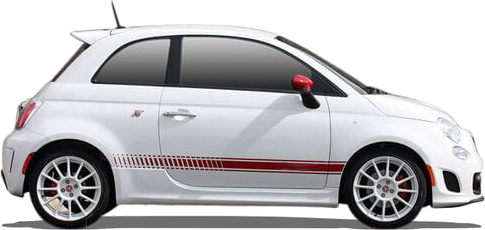The Comparative Analysis :
Abarth 500 Custom (14 - 15) vs. Hyundai i10 1.0 (13 - 16)
€ 18,200

€ 11,300

€ 18,200
Base Price ⓘBase price of a new vehicle with standard equipment in Germany at market launch.
€ 11,300
ⓘBase price of a new vehicle with standard equipment in Germany at market launch. Price Info
Vehicle Dimensions
The Abarth 500 is a little smaller in every dimension. It's 0.8 cm shorter, 3.3 cm narrower and 1.5 cm lower than the Hyundai i10 1.0.
Abarth 500
Hyundai i10 1.0
1485
1627
1893
1500
1660
1970
1627 mm
Width
1660 mm
1893 mm
Width Incl. Mirrors
1970 mm
1485 mm
Height
1500 mm
2300
3657
2385
3665
3657 mm
Length
3665 mm
2300 mm
Wheelbase
2385 mm
Vehicle Weight
Abarth 500
Hyundai i10 1.0
1110 kg
Kerb Weight
1008 kg
1425 kg
Gross Vehicle
Weight
Weight
1420 kg

Weight Difference:
102 kg
9.19 %

General
Abarth 500
Hyundai i10 1.0
ZAF 312
Generation
IA
Hatchback
Car Body Style
Hatchback
Unleaded (95 RON)
Fuel Type
Unleaded (95 RON)

Front-wheel drive
Drive
Front-wheel drive

5-speed manual transmission
Transmission
5-speed manual transmission
Engine
Abarth 500
Hyundai i10 1.0
Straight-four petrol engine with turbocharger
Engine Type
Straight-three petrol engine (naturally aspirated engine)
312 A1.000
Engine Code
4
Valves
4
4
Cylinders
3
1368 CC
Engine Capacity
998 CC
133 bhp
at 5500 rpm
Power
66 bhp
at 5500 rpm
Abarth 500
133 bhp
66 bhp
Hyundai i10 1.0
206 NM
at 3000 rpm
Max. Torque
95 NM
at 3500 rpm
Abarth 500
206 NM
95 NM
Hyundai i10 1.0
Performance
Abarth 500
Hyundai i10 1.0
127 mph
Maximum Speed
96 mph
7.9 sec
Acceleration 0 to 62 mph
14.9 sec
62 mph
62
mph
mph
110 m
0.000 sec

Abarth 500
62 mph
62
mph
mph
207 m
0.000 sec

Hyundai i10 1.0
▶ REPLAY
8.35 kg/bhp
Weight-to-Power Ratio
15.27 kg/bhp
Abarth 500
8.35 kg/bhp
15.27 kg/bhp
Hyundai i10 1.0
Fuel Economy / Emissions
Abarth 500
Hyundai i10 1.0
Fuel Economy
43 mpg
combined
60 mpg
Abarth 500
43 mpg
60 mpg
Hyundai i10 1.0
33 mpg
city
47 mpg
No data
motorway
71 mpg
35 L
Fuel Tank Capacity
40 L
334 mi
Range
529 mi
Abarth 500
334 mi
529 mi
Hyundai i10 1.0
Environmental Impact
123.1 kWh
Total Energy Consumption
per 100 miles ⓘThe total energy consumption per 100 miles is the amount of energy consumed by a vehicle when burning fuel or using electricity per 100 miles (final energy), and the energy required to produce the appropriate amount of fuel or electricity (primary energy).
per 100 miles ⓘThe total energy consumption per 100 miles is the amount of energy consumed by a vehicle when burning fuel or using electricity per 100 miles (final energy), and the energy required to produce the appropriate amount of fuel or electricity (primary energy).
89 kWh
Abarth 500
123.1 kWh
89 kWh
Hyundai i10 1.0
Euro 6b (NEFZ)
Emission Standard
Euro 5 / Euro 6b (NEFZ)
155 g/km (NEFZ)
CO2 Emissions
108 g/km (NEFZ)
Practical Convenience
Abarth 500
Hyundai i10 1.0
3
Doors
5
4
No. of Seats
5
315 kg
Maximum Payload
412 kg
185 L
Boot Capacity
252 L





610 L
Boot Capacity (Seats Down)
1046 L
















